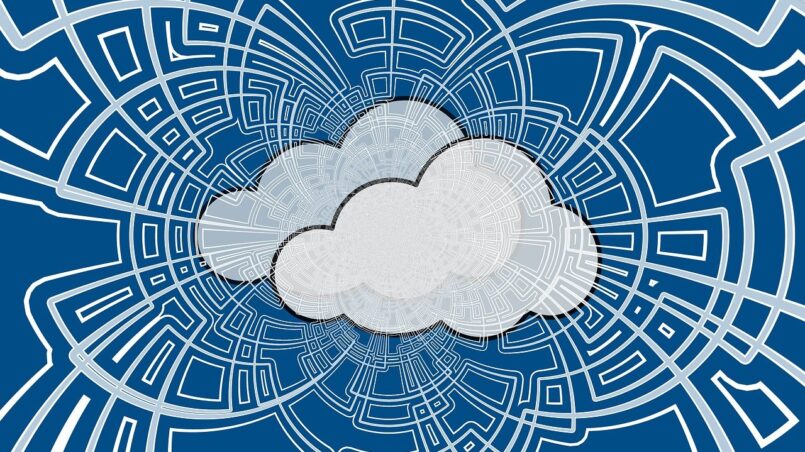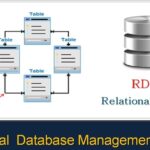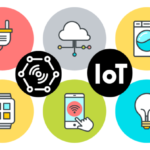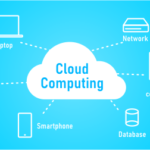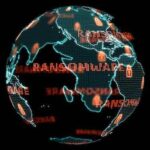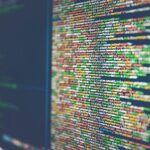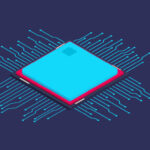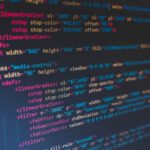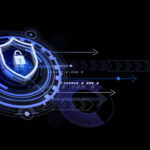A decentralized computing structure is positioned between the cloud and data-generating devices. Also known as fog computing or fogging.
The goal of fog computing is to bring the cloud closer to IoT devices. The major goal is to tackle the issues that cloud computing encounters while processing IoT data.

Why Fog Computing
- The existing cloud model’s capacity to fulfill IoT requirements is insufficient.
- Issues are:
- Volume
- Latency
- Bandwidth
- Data Volume:
- Exabytes of data are generated every day by billions of devices.
- Device density is still increasing every day
- The current cloud paradigm is incapable of handling this volume of data.
- Private firms, Factories, airplane companies produce a colossus amount of data every day.
- The current cloud paradigm is incapable of storing all of this data.
- Data need to be filtered.
- Latency
- The amount of time it takes a data packet to complete a round trip.
- A key consideration when dealing with time-sensitive data.
- If edge devices send time-sensitive data to the cloud for processing and then wait for the cloud to take appropriate action, it can lead to a slew of unintended consequences.
- When dealing with time-sensitive data, a millisecond might be a major difference
- Sending time-sensitive data to cloud for analysis
- Latency = T (from device to cloud) + T (data analysis) + T (from cloud to device), where T = Time
- Latency will be increased
- Accidents may have already occurred by the time the action reaches the gadget.
- Bandwidth:
- Bit-rate of data during transmission
- If all of the data created by IoT devices are transferred to the cloud for storage and analysis, the traffic generated by these devices will be enormous.
- Almost all of the bandwidth is used.
- Handling this volume of traffic will be quite difficult.
- Billions of devices consuming bandwidth
- If all devices come online, even IPv6 will be unable to provide service to all devices.
- Data that corporations may not wish to release online may be secret.
Requirements of IoT
- Reduce latency of data:
- Appropriate measures are taken at the correct time to avert serious accidents, machine failure, and other problems.
- A one-minute delay in making a decision makes a significant effect.
- By processing data near the data source, latency may be decreased.
- Data security:
- IoT data must be safeguarded and kept safe from intruders.
- Data are required to be monitored 24×7
- Before the attack causes significant damage to the network, suitable action should be done.
- Operation reliability:
- The data collected by IoT devices are utilized to tackle real-world problems.
- The integrity and availability of the data must be assured.
- Data unavailability and manipulation might be dangerous.
- Processing of data at the respective suitable place:
- Based on sensitivity, data may be classified into three kinds.
- time-sensitive data
- less time sensitive data
- data that are not time-sensitive
- Extremely time-sensitive data should be evaluated close to the source as possible.
- Non-time sensitive data will be evaluated on the cloud.
- Based on sensitivity, data may be classified into three kinds.
- Monitor data across the large geographical area:
- The position of linked IoT devices can be dispersed over a vast geographical area.
- Monitoring a country’s or state’s railway track, for example.
- The devices are subjected to adverse environmental conditions.
When should we use Fog
- If the data should be analyzed with a fraction of a second
- If there are a huge number of devices
- If the devices are separated by a significant geographical distance
- If the devices must be exposed to harsh circumstances
Architecture of Fog
- Through the fog, cloud services extended to IoT devices.
- Fog is a layer that exists between the cloud and IoT devices.
- Many fog nodes can be present
- Sensor data is processed in the fog before being transmitted to the cloud.
- Reduces latency, saves bandwidth, and saves cloud storage

Fog Nodes
Characteristics for a fog node:
- Storage – To give transient storage
- Computing facility
- Before transmitting data to the cloud, it must be processed.
- To make quick decisions
- Network connectivity – To connect the IoT devices, other fog nodes, and cloud
- Example – routers, embedded servers, switches, video surveillance cameras, etc.
- Deployable anywhere inside the network.
- Each fog node has its aggregate fog node.
Working of Fog
- Three types of data
- Very time-sensitive data
- Less time-sensitive data
- Data that are not time-sensitive
- The function of fog nodes is determined by the type of data they receive.
- Each fog node should have an IoT application deployed.
- The data from the devices is ingested by the nearest fog node.
- Most time-sensitive data
- Data that must be examined in a fraction of a second
- Analyze at the nearest node itself
- The choice or action is sent to the devices.
- Sends and saves the summary to the cloud for future use.
- Less Time-sensitive data
- Data that can be evaluated in a matter of seconds or minutes
- Are sent to the aggregate node for processing.
- Following analysis, the aggregate node communicates the decision or action to the device via the closest node.
- The summary is sent to the cloud by the aggregate node for storage and future analysis.
- Non-time-sensitive data
- Data that can be held for hours, days, or weeks
- Sent to the cloud for storage and analysis in the future.
- These fog node summaries may be thought of as less time-sensitive data.
| Fog node closest to devices | Fog aggregate nodes | Cloud | |
| Analysis duration | Fraction of second | Seconds to minutes | Hours to weeks |
| IoT data storage duration | Transient | Hour, days | Months to years |
| Geographical coverage | Very local | Wider | Global |
About Fog Computing
- It is the physical location of the device, which is much closer to the users than the cloud servers.
- Its goal is to locate basic analytic services at the edge of the network, closer to where they are needed.
- This decreases the distance that users must travel across the network to send data, boosting performance and overall network efficiency.
- Example: The CCTV footage from a security camera with a fog computing facility
Cloud vs Fog vs Edge
| Feature | Cloud computing | Fog computing | Edge computing |
| System | Centralized system | Distributed decentralized inftrastructure | Edge based computing structure |
| Latency | High latency | Low latency | Low latency |
| Computation | In the cloud itself | In the processors connected to the LAN or the LAN hardware itself | In the devices to which sensors are attached |
| Energy comsumed | Normal | High while large number of devices connected to the network | High at the devices |
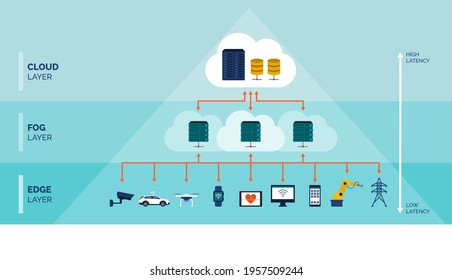
Benefits of Fog Computing
- Greater Market Agility
- Better security
- Deeper Insights with Privacy Control
- Reduced Operating Cost
- Fog Computing applications
- Fog Computing in Smart Cities
Advantages
- The quality of data that has to be transmitted to the cloud is reduced using this method.
- Security – decentralization of fog devices make it easy to detect the security threats
- Provides better security
- Fog nodes use the same security policy
- Low operation cost
- Before being sent to the cloud, data is processed at the fog nodes.
- Reduces the bandwidth consumption
- Reduces unwanted accidents
- Latency will be reduced during decision making.
- Quick decision making
- Better privacy
- Every industry can analyze its data locally
- Store confidential data in their local servers
- Send only data that can be shared with the cloud.
- Business agility
- According to the tools available, a fog application may be quickly constructed.
- It can be deployed anywhere we need.
- It can be configured to match the customer’s demands.
- Support mobility
- Nodes can be mobile
- Nodes are free to join and exit the network at any moment.
- Deployed in remote places
- It can be deployed in remote places.
- Can be subjected to harsh environmental conditions
- Underwater, railway tracks, automobiles, industrial floors, and so on.
- Bette data handling
- Can operate with less bandwidth
- Data can be analyzed locally
- Reduce the risk of latency
Disadvantages
- Congestion between the host and the fog node may occur as traffic increases (heavy data flow).
- Power consumption: when a layer is added between the host and the cloud, power usage rises.
- Fog uses additional nodes.
- Power consumption is higher than centralized cloud
- Maintenance: It’s challenging to coordinate duties between the host and fog nodes, as well as the fog nodes and the cloud.
- Data management becomes difficult because, in addition to storing and calculating data, data transport necessitates encryption and decryption, which results in data leakage.
- Data safety
- The nodes that generate data are spread out.
- Providing an authentication and authorization system for the whole node is not an easy task.
- Reliability
- It is tough to maintain data integrity and availability for millions of nodes.
- The failure of a node does not affect the network.
- Fault tolerance
- A node’s failure should be addressed as soon as possible.
- Individual failure should not have an impact on the overall circumstance.
- Real-time analysis
- Real-time analysis is a primary requirement for minimizing latency
- Dynamic analysis and decision making reduces danger and increase output
- It is difficult to keep track of a large number of nodes.
- Programming architecture
- Fog nodes may be mobile.
- When necessary, nodes can join to and disconnect from the network.
- Many data processing frameworks are statically configured
- These frameworks are incapable of providing adequate scalability and flexibility.
Applications
- Fog computing is utilised in IoT devices (for example, the Car-to-Car Consortium in Europe), devices in sensors and cameras (IIoT-Industrial Internet of Things).
- Fog computing is essential for devices that must do complex computations and processing.

- Vehicles that are linked: self-driven or self-driven vehicles
- Smart Grids and Smart Cities: Energy networks employ real-time data to control systems more efficiently.
- Real-time health monitoring
- Patients suffering from chronic illnesses can be tracked in real-time.
- Stroke patients
- Analyze the data in real-time
- During an emergency, alert the respective doctors immediately.
- Historical data analysis helps anticipate the patient’s future hazards.
- Intelligence power efficient system
- Power-efficient
- The reports detail power consumption reports every day.
- Suggest economical power usage plan
- Real-time rail monitoring
- Railway tracks can be equipped with fog nodes.
- Real-time monitoring of the track conditions
- Sending data to the cloud for processing is inefficient for high-speed trains.
- Fog nodes provide fast data analysis
- Improve safety and reliability
- Pipeline optimization
- Gas and oil are transported through pipelines.
- It is required to monitor pressure, flow, and the compressor in real-time.
- Terabytes of data are created
- It is inefficient to send all of this data to the cloud for analysis and storage.
- Network latency is not acceptable
- Fog is a solution
- Real-time windmill and turbine analysis
- Analysis of wind direction and speed can boost production.
- Data can be monitored in real-time.
Example – Intelligent Surveillance
- Intelligent surveillance through distributed camera networks
- Monitoring video streams from the system of the camera manually is not practical
- The requirements of such a surveillance system are:
- Low-latency communication
- Handling voluminous data
- Heavy long-term processing
Fog Topology
- The cloud data center at the apex
- Smart cameras at the network’s edge
- Smart Cameras – live video streams – Motion Detector
- Motion Detector – upstream – Object Detector
- Object Detector – object – user and object coordinates – Object Tracker
- Object Tracker – PTZ parameters – PTZ Control
Fog computing – an answer to computing challenges
- Foundation of the IoT – agility, and flexibility of big data applications
- The escalation of IoT resulted in an increased volume of digitally generated data
- A major challenge is managing the data
- As a result, fog computing has emerged.
Conclusion
- Fog is an ideal cloud and IoT partner.
- Solves the key issues that the cloud has when dealing with IoT data.
- Benefits span from a person to enormous organizations
- Provides real-time analysis and monitoring

